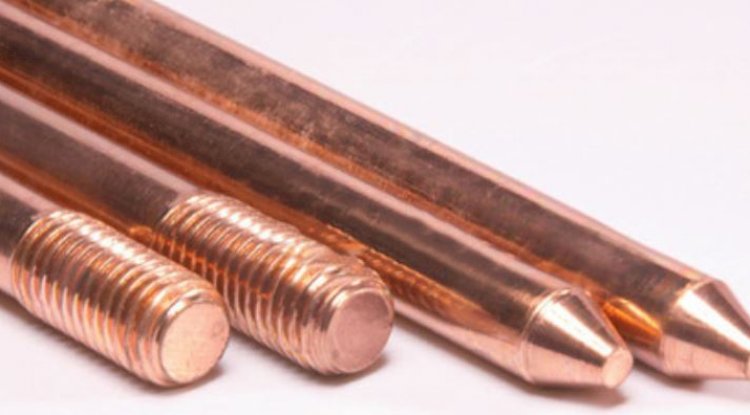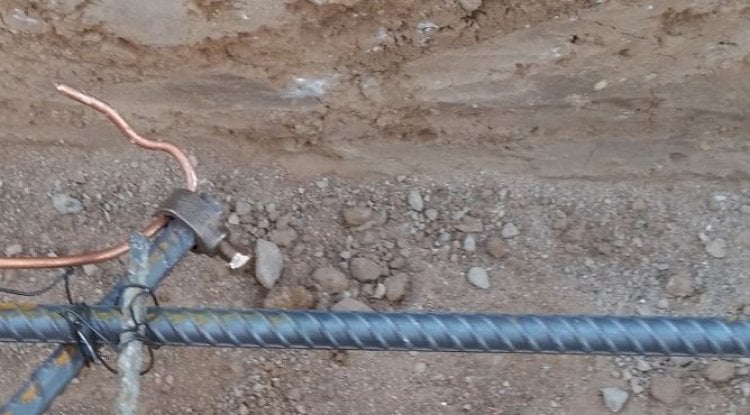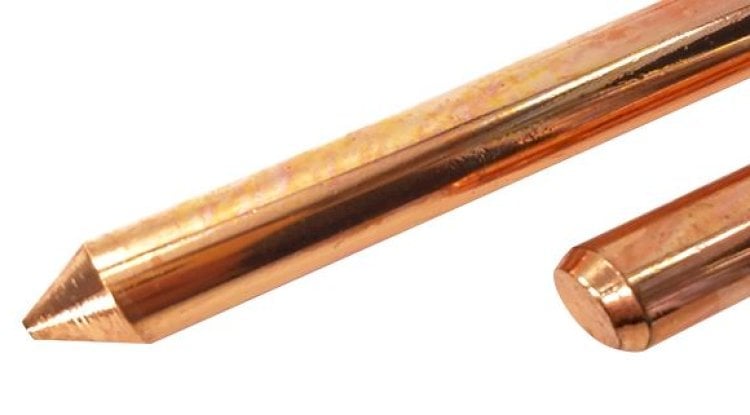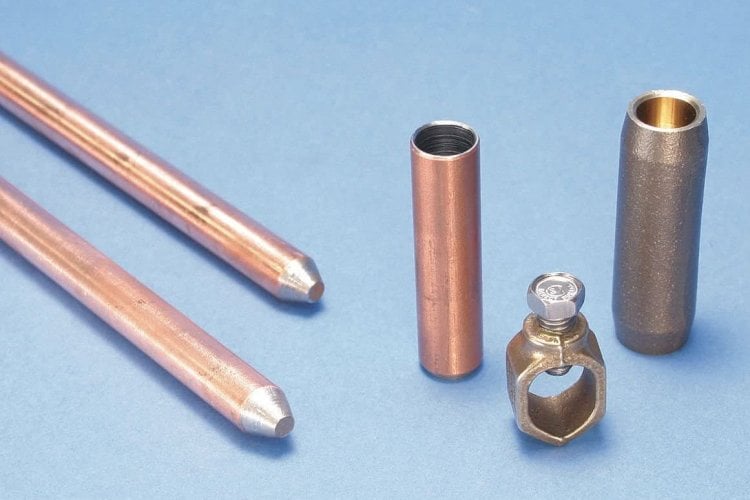The Driven Rod
The standard driven rod or copper-clad rod consists of an 8 to 10 foot length of steel with a 5 to 10-mil coating of copper. This is by far the most common grounding device used in the field today. The driven rod has been in use since the earliest days of electricity, with a history dating as far back as Benjamin Franklin.
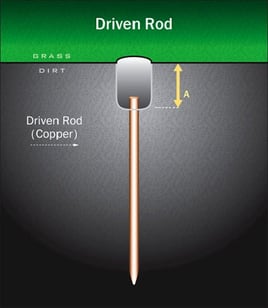
Driven rods are relatively inexpensive to purchase, however, ease of installation is dependent upon the type of soil and terrain where the rod is to be installed. The steel used in the manufacture of a standard driven rod tends to be relatively soft. Mushrooming can occur on both the tip of the rod, as it encounters rocks on its way down, and the end where force is being applied to drive the rod through the earth. Driving these rods into the earth can be extremely labor-intensive, when rocky terrain creates problems as the tips of the rods will continue to mushroom. Often, these rods will hit a rock and actually turn back around on themselves and pop back up a few feet away from the installation point.
The National Electrical Code requires that the grounding electrodes be tested to ensure that they are under 25 ohms resistance-to-ground (earth). It is important to know that aluminum electrodes are not allowed for use in grounding (earthing) as aluminum will rapidly corrode when buried.
Because driven rods range in length from 8 to 10 feet, a ladder is often required to reach the top of the rod, which can become a safety issue. Many falls have resulted from personnel trying to literally ‘whack’ these rods into the earth, while hanging from a ladder many feet in the air.
The National Electrical Code requires that driven rods be a minimum of 8 feet in length and that 8 feet of length must be in direct contact with the soil. To comply with this requirement the installer will typically use a shovel to dig down into the ground 18 inches before a driven rod is installed, although the most common rods used by commercial and industrial contractors today are rods 10 ft in length, which negates the need for the extra installation process. This can save time as well as meet with the many industrial specifications that also require this length as a minimum.
A common misconception is that the copper coating on a standard driven rod has been applied for electrical reasons. While copper is certainly a conductive material, its real purpose on the rod is to provide corrosion protection for the steel underneath. Many corrosion problems can occur because copper is not always the best choice in corrosion protection. It should be noted that galvanized driven rods have been developed to address the corrosion concerns that copper presents, and in many cases are a better choice for prolonging the life of the grounding rod and grounding systems. Generally speaking, galvanized rods are a better choice in all but high salt environments.
An additional drawback of the copper-clad driven rod is that copper and steel are two dissimilar metals. When an electrical current is imposed on the rod, electrolysis will occur, also the act of driving the rod into the soil can further damage the copper cladding, allowing corrosive elements in the soil to attack the bared steel and decrease the life expectancy of the rod. Environment, aging, temperature and moisture also easily affect driven rods, giving them a typical life expectancy of 5 to 15 years in good soil conditions. Driven rods also have a very small surface area, which is not always conducive to good contact with the soil. This is especially true in rocky soils, in which the rod will only make contact on the edges of the surrounding rock.
A good example of this is to imagine a driven rod surrounded by large marbles. Actual contact between the marbles and the driven rod will be very small. Because of this small surface contact with the surrounding soil, the rod will increase in resistance-to-ground, lowering the conductance, and limiting its ability to handle high-current faults.
Advanced Driven Rods

Advanced Driven Rods are specially engineered variations of the standard driven rod, with several key improvements. Because they present lower physical resistance, advanced rods can now go into terrain where only large drill-rigs could install before and can quickly be installed in less demanding environments. The modular design of these rods can reduce safety-related accidents during installation. Larger surface areas can improve electrical conductance between the soil and the electrode.
Of particular interest is that Advanced Driven Rods can easily be installed to depths of 20 ft or more, depending upon soil conditions.
Advanced Driven Rods are typically driven into the ground with a standard drill hammer. This automation dramatically reduces the time required for installation. The tip of an Advanced Driven Rod is typically made of carbide and works in a similar manner to a masonry drill bit, allowing the rod to bore through rock with relative ease. Advanced Driven Rods are modular in nature and are designed in five foot lengths. They have permanent and irreversible connections, which enable an operator to install them safely, while standing on the ground. Typically, a shovel is used to dig down into the ground 18 inches before the Advanced Driven Rod is installed. The Advanced Driven Rod falls into the same category as a driven rod and satisfies the same codes and regulations.
In the extreme northern and southern climates of the planet, frost-heave is a major concern. As frost sets in every winter, unsecured objects buried in the earth tend to be pushed up and out of the ground. Driven grounding rods are particularly susceptible. Anchor plates are sometimes welded to some buried portion of the rods to prevent them from being pushed up and out of the earth by frost-heave. This however requires that a hole be augured into the earth in order to get the anchor plate into the ground, which can dramatically increase installation costs. Advanced Driven Rods do not suffer from frost-heave issues and can be installed easily in extreme climes.
The Engineering Experts at E&S Grounding Solutions

